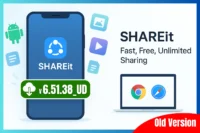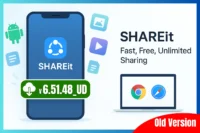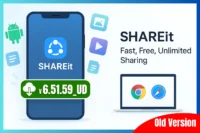The Evolution of SHAREit: From Lenovo’s File-Sharing Utility to a Global Multimedia Platform
Published: 21 Jul 2025
SHAREit has evolved from a simple file-sharing app backed by Lenovo into a global platform for multimedia content, and its journey is truly impressive. Initially designed to address the issue of slow file transfers, SHAREit has become one of the most popular apps worldwide thanks to smart technology and good timing.
Despite facing serious issues, such as security concerns and bans in some countries, SHAREit has adjusted its focus. Now, it offers a wide range of features, including entertainment, gaming, and useful tools. This article provides a detailed look at SHAREit’s history, its evolution over time, its successes, the challenges it has faced, and what the future may hold for the app.
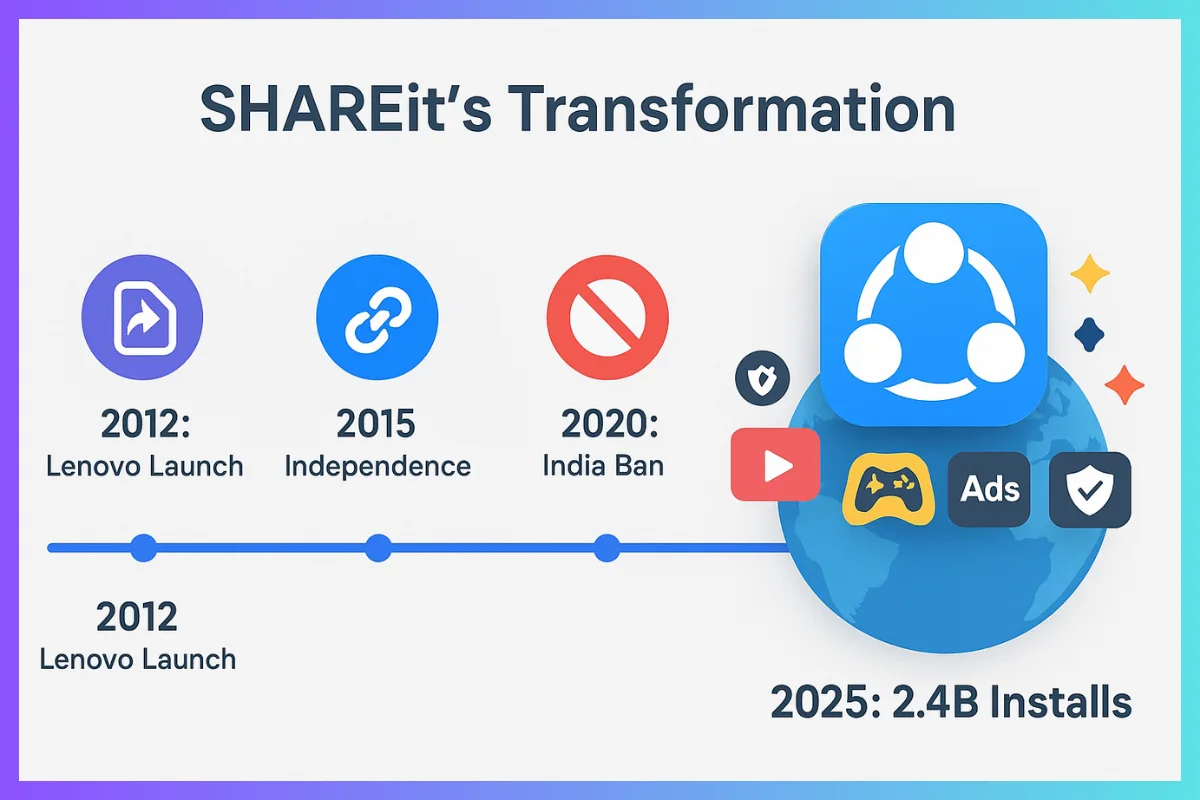
Origins at Lenovo (2012–2015)
SHAREit was created to address a common challenge everyone faces: slow and frustrating file transfers between devices. It began its journey within Lenovo, which laid the groundwork for its success around the world.
- Beginning (2012):
SHAREit was developed in Lenovo’s app division. The idea came from co-founder Michael Qiu, who was tired of waiting for files to transfer over Bluetooth during his college days. The aim was to create a quick and easy way to share files without needing an internet connection, especially in areas with poor internet access, such as parts of China.
- Launch (2013–2014):
SHAREit was first introduced as part of Lenovo’s “DOit” app bundle and came pre-installed on Lenovo devices, giving it a head start with users. It could transfer files across various devices, including Android, iOS, Windows, and Windows Phone, making it more versatile than competitors like Xender.
- Growth:
By 2014, SHAREit had made a significant impact, gaining 150 million users in India and over 500 million worldwide. Its ability to work offline and appeal to people in regions with high data costs contributed to its popularity.
Spin-Off and Independence (2015)
SHAREit, originally part of Lenovo, was made into its own company, which was a key moment in its
- Development. In 2015, SHAREit was acquired by Smart Media4U Technology, a Singapore-based company. This change enabled SHAREit to become independent and compatible with all types of devices, not just those made by Lenovo.
- Due to this separation, SHAREit could expand rapidly around the world and offer a broader range of services, laying the groundwork for its impressive growth.
Global Expansion and Feature Diversification (2015–2020)
SHAREit experienced impressive growth by meeting the needs of users in developing countries and expanding beyond its role as a file-sharing app.
- Viral Popularity:
Its ability to quickly share files without needing an internet connection made it very popular in regions such as India, Southeast Asia, Africa, and the Middle East, where internet access can be limited or costly. The app’s user-friendly design, which allows for sharing through QR codes and local connections, helped it spread through word of mouth.
- Adapting to Users:
SHAREit supports 45 different languages and tailors its content for various regions, Making it easier for more people to use and enjoy
- Content Streaming:
SHAREit partnered with companies like Times Music to offer video and music streaming, turning the app into a hub for various media
- Gaming Center:
It introduced fun HTML5 games and gaming videos, attracting younger users.
- Helpful Tools:
SHAREit features include assistance with tasks such as transferring files from one phone to another, managing files, converting videos to audio, editing PDFs, and a “Safebox” for protecting sensitive files.
- Media Downloader:
The app now enables users to download videos and photos from platforms such as WhatsApp and Instagram, and it has added a music player for an enhanced user experience.
- Prayer Alerts:
Recognizing cultural needs, SHAREit included prayer time notifications for Muslim users.
- Acquisition of Fastfilmz (2018):
SHAREit strengthened its entertainment offerings by acquiring Fastfilmz, a popular streaming platform In South India.
- Making Money:
The app began showing advertisements to earn revenue from its large user base, although this raised concerns about unwanted ads cluttering the user experience.
Challenges and Controversies
SHAREit has achieved a lot of success, but it has also faced several challenges that tested its ability to adapt and grow.
- Concerns About Security and Privacy
One of the main issues raised by users and authorities was the app’s need for extensive permissions, which raised privacy concerns. Security experts have identified vulnerabilities in the app that could enable hackers to access data or remotely control devices, particularly when using unprotected Wi-Fi networks.
Additionally, the app’s feature for sharing files made it a channel for distribution.
No harmful software, particularly for illegal downloads. In 2017, the Indian Defense Ministry instructed its military personnel to remove SHAREit and 41 other apps due to security concerns, although the company denied the request. I agree with this decision.
- Ban in India in 2020:
In June 2020, tensions between India and China led to a ban on SHAREit and 58 other apps in India, citing concerns over national security and data protection. Since India was SHAREit’s biggest market, this was a major blow to the app’s operations.
- Global Attention:
In the United States, the Department of Homeland Security flagged SHAREit as a possible security threat. Consequently, Google Play implemented stricter rules, which resulted in the app being temporarily removed or warned against in certain regions.
- Issues with Content Sharing:
The app made it easy to share large media files, which led to numerous copyright issues and complaints from creators and industry professionals regarding the sharing of content without permission.
- User Experience Challenges:
Many users expressed frustration over intrusive ads and pop-ups, leading to complaints that the app felt cluttered, which negatively affected their overall satisfaction.
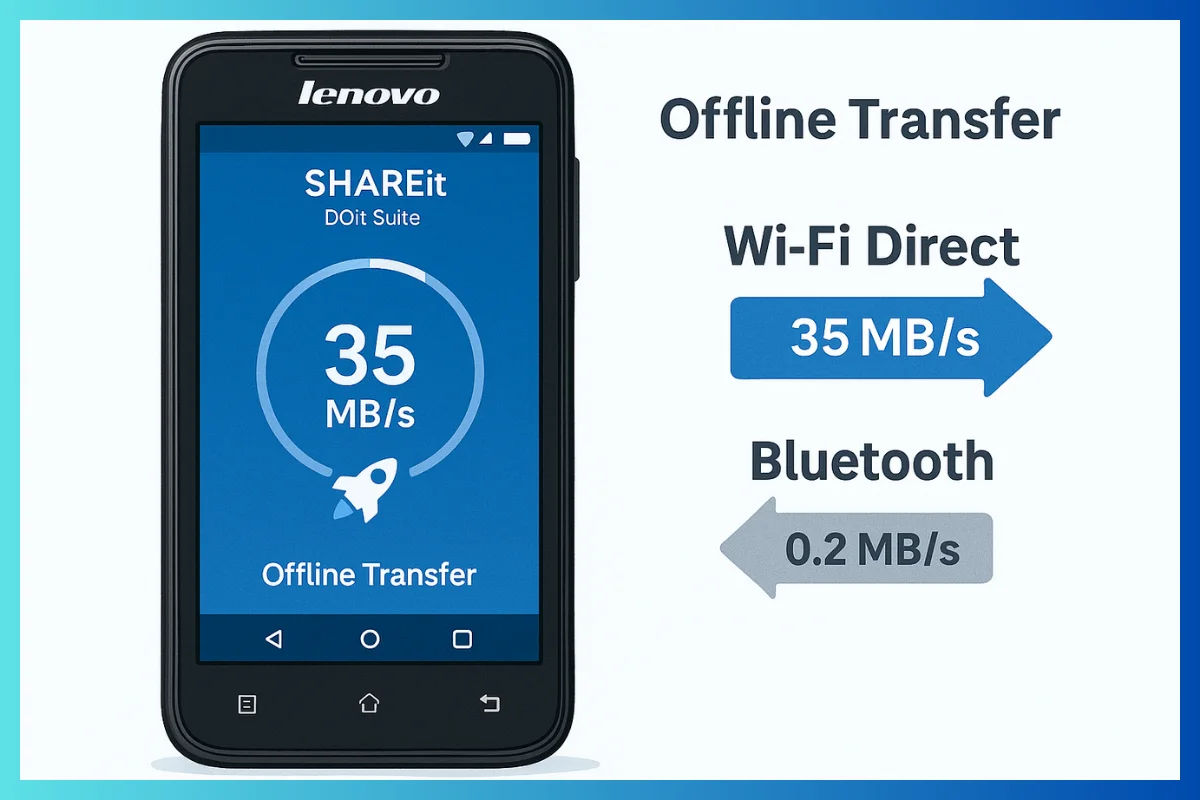
Reinvention and Modern Era (2020–2025)
Facing some tough challenges, SHAREit made a big shift to transform itself into a platform focused on content while also addressing privacy and regulatory issues.
- Rebranding and Relocation:
- SHAREit has changed its name to SHAREit Group, now operating under a new company based in Singapore, Smart Media4U Technology Pte. Ltd. This move aims to broaden its focus on media and technology.
- They also moved their headquarters from China to Singapore to avoid political issues and present themselves as a more neutral global company.
- Shift to Content and Services:
- SHAREit has shifted its focus from its original role as a file-sharing app to now spotlighting video streaming, music, casual games, and news.
- The company formed partnerships with music labels, video creators, and game developers to provide licensed content.
- They also introduced a feature called SHAREit Wallet in some areas, allowing users to make in-app purchases and monetize their engagements.
- Additionally, SHAREit is focusing on emerging markets in regions like Indonesia, the Middle East, Africa, and Latin America, where there are fewer regulatory pressures.
- Security Enhancements:
- To tackle privacy concerns,
SHAREit added features like file encryption and secure updates to protect user information. - They also integrated security measures from Google Play to ensure that transfers through their app are free from malware.
- Lenovo’s Discontinuation:
- By 2017, Lenovo had stopped using its version of SHAREit and switched to a new app called Lenovo Connect2. This marked a complete separation of the app from its original parent company.
Current Status and Achievements (2025)
As of 2025, SHAREit has established itself as a leading player in file sharing and multimedia services around the world, achieving several important milestones:
- User Base:
The app has been downloaded over 2.4 billion times in more than 200 countries, making it one of the most popular apps globally.
- Recognition:
SHAREit has been recognized as the fastest-growing media publisher, consistently earning top spots in rankings of global apps.
- Business Model:
The company has expanded beyond just file sharing into areas like digital content delivery, advertising, and gaming, creating a well-rounded platform for users.
- Cross-Platform Support:
SHAREit is available on various devices, including Android, iOS, Windows, macOS, and online, ensuring that people can access it easily, no matter what device they use.
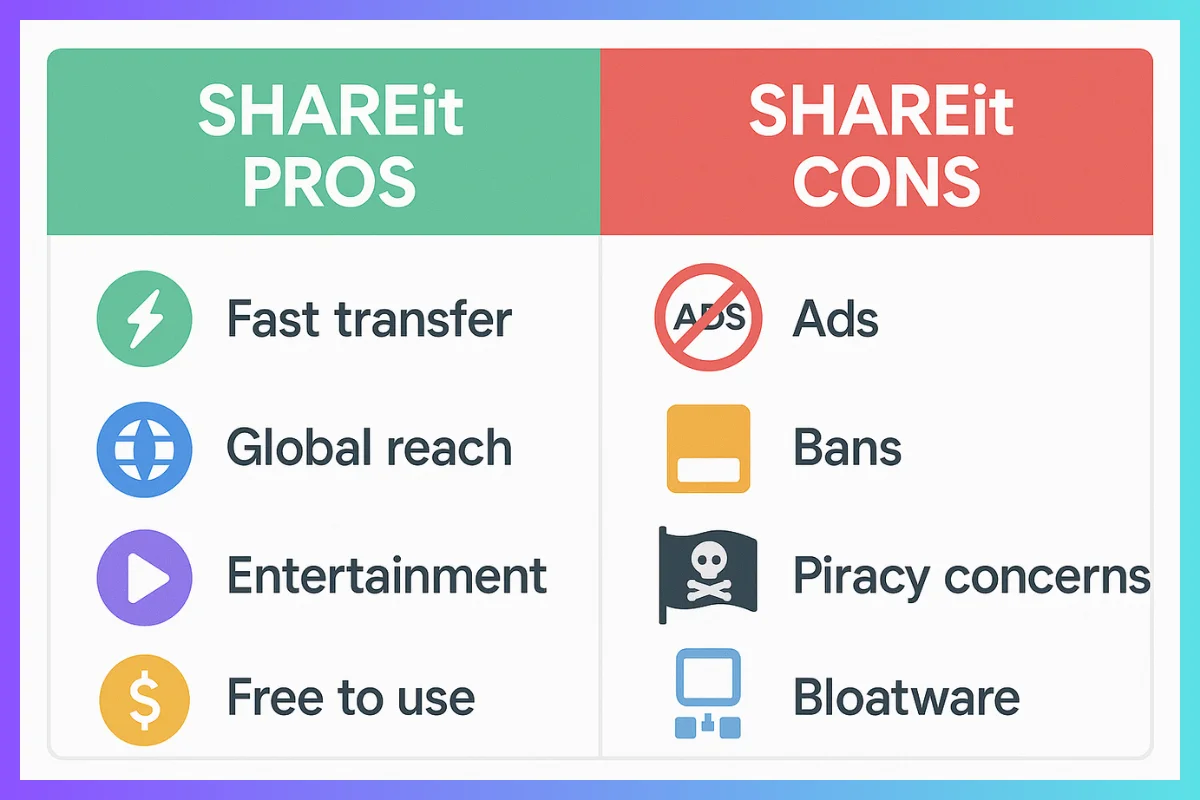
Timeline of Milestones
- 2012: An idea was born at Lenovo to help speed up the transfer of files.
- 2013-2014: The idea became a reality when it was launched as part of Lenovo’s app collection, called DOit, it gained 150 million users in India and 500 million worldwide.
- 2015: The app became a standalone company named Smart Media4U Technology Pte. Ltd., making it independent from Lenovo.
- 2017 The user base grew to 1 billion, and Lenovo decided to stop running its version, choosing to replace it with a new app called Connect2.
- 2018: The company acquired Fastfilmz, which allowed it to branch out into the world of entertainment and gaming.
- 2020: It was recognized as the fastest-growing media publisher but faced a ban in India.
- 2025: The app achieved over 2.4 billion installations and transformed into a platform for both content and gaming.
Critical Perspective and Future Outlook
- SHAREit’s journey reflects its ability to address user needs in emerging markets while navigating significant challenges. Its initial success was built on solving a universal pain point—fast, offline file sharing—leveraging Wi-Fi Direct and cross-platform compatibility. However, its massive scale brought scrutiny over security, privacy, and content moderation, culminating in the 2020 ban in India, which forced a strategic pivot.
- The shift to a content-centric “super app” demonstrates SHAREit’s agility, but it risks diluting its core file-sharing functionality. Ongoing security concerns and regulatory challenges, particularly in markets sensitive to data privacy, continue to be hurdles. The company’s focus on emerging markets and partnerships for licensed content shows promise, but regaining trust and navigating geopolitical complexities will be critical for sustained growth.
- SHAREit’s evolution from a Lenovo utility to a global multimedia platform is a testament to its adaptability and user-centric innovation. Its future success will depend on balancing feature expansion with simplicity, addressing security concerns, and maintaining relevance in a competitive landscape with alternatives like Nearby Share and AirDrop.

- Be Respectful
- Stay Relevant
- Stay Positive
- True Feedback
- Encourage Discussion
- Avoid Spamming
- No Fake News
- Don't Copy-Paste
- No Personal Attacks

- Be Respectful
- Stay Relevant
- Stay Positive
- True Feedback
- Encourage Discussion
- Avoid Spamming
- No Fake News
- Don't Copy-Paste
- No Personal Attacks
